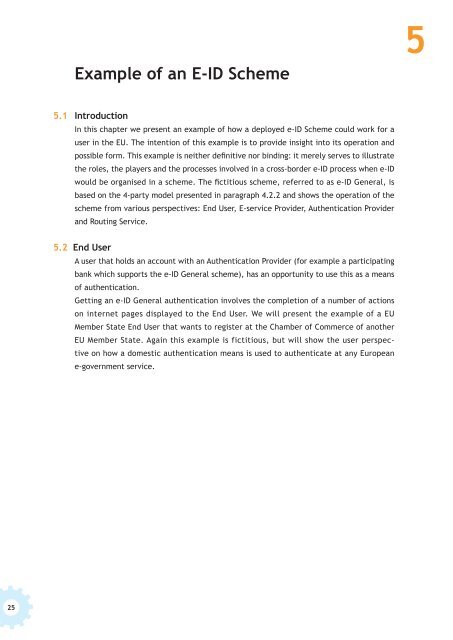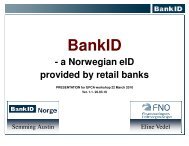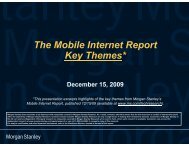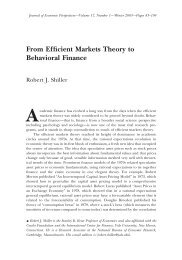A Network Approach to E-identification
A Network Approach to E-identification
A Network Approach to E-identification
- No tags were found...
Create successful ePaper yourself
Turn your PDF publications into a flip-book with our unique Google optimized e-Paper software.
5<br />
Example of an E-ID Scheme<br />
5.1 Introduction<br />
In this chapter we present an example of how a deployed e-ID Scheme could work for a<br />
user in the EU. The intention of this example is <strong>to</strong> provide insight in<strong>to</strong> its operation and<br />
possible form. This example is neither definitive nor binding: it merely serves <strong>to</strong> illustrate<br />
the roles, the players and the processes involved in a cross-border e-ID process when e-ID<br />
would be organised in a scheme. The fictitious scheme, referred <strong>to</strong> as e-ID General, is<br />
based on the 4-party model presented in paragraph 4.2.2 and shows the operation of the<br />
scheme from various perspectives: End User, E-service Provider, Authentication Provider<br />
and Routing Service.<br />
5.2 End User<br />
A user that holds an account with an Authentication Provider (for example a participating<br />
bank which supports the e-ID General scheme), has an opportunity <strong>to</strong> use this as a means<br />
of authentication.<br />
Getting an e-ID General authentication involves the completion of a number of actions<br />
on internet pages displayed <strong>to</strong> the End User. We will present the example of a EU<br />
Member State End User that wants <strong>to</strong> register at the Chamber of Commerce of another<br />
EU Member State. Again this example is fictitious, but will show the user perspective<br />
on how a domestic authentication means is used <strong>to</strong> authenticate at any European<br />
e-government service.<br />
25
















